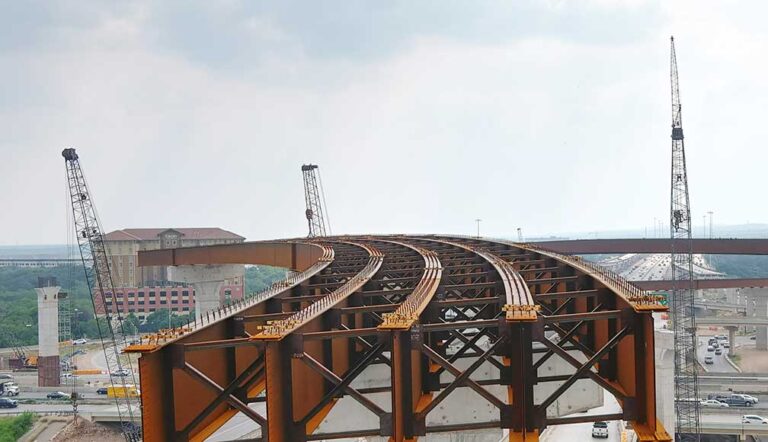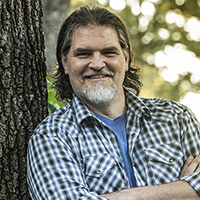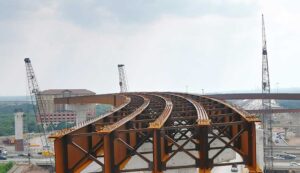As the Biden administration winds down and the Trump administration prepares to take office, numerous industries are working to score the effects of the policies of the old ahead of the new.
In one particular instance — the Bipartisan Infrastructure Law (BIL) — the scorecard is mixed.
Signed into law by President Joe Biden in November 2021, the BIL allocates hundreds of billions of dollars for federal infrastructure including public transit, passenger rail, highways, roads and bridges.
The BIL also contains more controversial measures, such as investment in clean energy transmission and electric vehicle (EV) infrastructure. The push to phase out internal combustion engines in favor of EVs is a key sticking point for many in the freight industry.
BIL expenditures
Depending on the category, BIL expenditures have resulted in an undeniably impressive spate of improvement projects — more than 66,000 projects in all according to the U.S. Department of Transportation (USDOT). These have continued as recently as a couple of months ago with the announcement of two major awards totaling almost $3.6 billion for various projects.
On Nov. 15, the third anniversary of the enactment of the BIL, the Biden administration announced $3.5 billion in grants addressing passenger rail, highway improvements and investments in ports — all projects billed as part of a larger effort to strengthen the nation’s supply chain. Also announced were grants totaling $172 million to be awarded to more than 250 communities to make local roads safer, part of USDOT’s Safe Streets and Roads for All program.
Missed opportunities
Unfortunately, even with all this windfall spending there have been missed opportunities to correct issues that have long plagued the U.S. transportation system, particularly for those who make their living on the highway, according to David Heller, senior vice president of safety and government affairs at Truckload Carriers Association (TCA).
“A major component of (the BIL) was $110 billion aimed at highways, bridges, roads and improvements,” he said. “Certainly as you drive on the interstates across this country, you’ll see signs of projects that are funded through that infrastructure law — which has been a good thing. The money is circulating where it needs to go; the country’s using those dollars to fix roads and bridges.”
But roads and bridges aren’t the only parts of the infrastructure that need work.
“The one thing that was left out of those dollars that should have been included was truck parking and that continues to reach epidemic proportions in this industry,” Heller said. “It’s a real problem that will take real dollars to solve.”
The problem has been compounded by inflation — another hallmark of the Biden Era —making it very unlikely that under currently available funding such missed items will be paid for due to the increased costs just since 2021, Heller says.
“You know, 2020 prices are not 2024 prices — and those prices aren’t going away anytime soon,” he said. “Projects come down to the most important things for the American public, not necessarily just trucking. All traffic uses both roads and bridges, for instance, but the American public probably isn’t going to use truck parking.”
The TCA is taking steps to remediate the issue through the Truck Parking Safety Improvement Act, which calls for $755 million over three years to address the problem. Heller says the association is hoping to get the measure into the next infrastructure bill, which will follow the current BIL’s expiration in September 2026.
EV infrastructure
Easily the most embarrassing outcome of BIL has been the $7.5 billion gambit to build an electric vehicle (EV) infrastructure that would make electric vehicles — including over-the-road Class 8 trucks — more practical for everyday use.
The Biden Administration’s stated goal was to construct a nationwide network of 500,000 ports, including high speed chargers, placed no more than 50 miles apart along highways. However, as of June 2024, only seven charging stations were operational under the program, offering a combined few dozen ports.
Heller says the laughable lack of progress should indicate that widespread adoption of electric vehicles in long-haul trucking is likely quite a way off. However, he’s quick to point out that lingering Biden regulatory time lines and state-level mandates for phasing out internal combustion engines in favor of electric still represent a thorny issue for the industry.
“Trucking is a vast industry. Transitioning over to electric vehicles with charging stations is going to take a heavy lift — and that heavy lift hasn’t happened,” he said. “We can’t base our future on rainbows and unicorns. It has to be real dollars that are spent in real ways to develop an infrastructure and a power grid to sustain an industry that delivers.”
Right now, he says, the infrastructure to support widespread use of heavy-duty electric trucks is simply not there.
“It does call into the question the reality of the timelines and stringent rules that the EPA and California have put into place and how achievable they actually are,” Heller said.
“I’ll tell you right now they’re not achievable. It can’t happen. The work hasn’t been done, and it won’t be done any time soon,” he continued. “What becomes the bigger question is this: Why as an industry are we still facing these time lines through EPA and through California that just aren’t achievable?”
The incoming Trump Administration has been vocal in its intention to reduce burdensome regulations and eliminate previous mandates regarding EVs. Heller is hopeful that such moves will happen under the new administration, as well as additional infrastructural spending — even if it’s not all resolved in the first 100 days.
“As an industry we probably can fully expect they’ll be examining any rule the industry’s put out,” he said. “I think President Trump recognizes the shortcomings of all these electric vehicle rules, and they will be taking that under consideration.”
Road and bridge investments
Heller notes that roadways and bridge investments are a statistical reality.
“It has to happen. You can’t turn your back on it. If you turn your back on it, then the economy suffers and the American public suffers,” he said.
“The clock has already started ticking in terms of what the next highway bill looks like. As an industry, we have to step up and explain and communicate our concerns to those that regulate and those that legislate,” he concluded. “It’s up to us to tell them how things work — and the more we do that, the better off we are as an industry.”
Dwain Hebda is a freelance journalist, author, editor and storyteller in Little Rock, Arkansas. In addition to The Trucker, his work appears in more than 35 publications across multiple states each year. Hebda’s writing has been awarded by the Society of Professional Journalists and a Finalist in Best Of Arkansas rankings by AY Magazine. He is president of Ya!Mule Wordsmiths, which provides editorial services to publications and companies.








